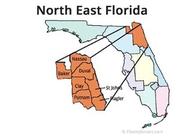Understanding Website Data Analytics
Tracking the performance of your project's or center's website content offers a great deal of insight. Data analytics allow users to learn what pages are performing best, where website traffic is coming from, how many unique or returning visitors enter your site, and how users navigate the site. However, the number of metrics available may overwhelm even the most experienced analytics users. By centering a few key areas of analysis, you can efficiently focus on the elements of site performance that matter most:
- Unique sessions showcase how many visits your site is getting overall. Sessions are defined as a collection of interactions on your site by one user, so sessions can encompass multiple interactions and pageviews. Users can open and leave multiple sessions per day, and these sessions end either by expiring time limit or if the visitor exits and re-enters in a different manner. Examining the number of unique sessions is a great starting place for your outreach team. It also provides a useful metric to check in on your progress and set tangible, data-driven goals for your website performance.
- Traffic sources tell you how people found your site. Some examples of how visitors might enter include: via search engine listings, clicking through from social media posts or email links, via links on other websites, or by directly entering the URL of your project's or center's website into a browser. This offers important insight about whether your outreach team's related efforts, such as social media campaigns, are effective in driving traffic to the website.
- Time visitors spend on the site helps your outreach team identify whether visitors linger on your site or not. Websites that are intended to showcase the work and output of projects or centers should retain visitors for a while, since they are content-driven. If you see that visitors are not spending a lot of time on your site, it may indicate that you should redesign the landing page or pages through which they tend to enter. It is also helpful to consider your project's or center's website bounce rate in combination with this metric.
- Conversion rate is extremely useful when examined in concert with the previous two metrics. Website conversions are when visitors complete an action on the site that your outreach team is hoping those visitors will take. For example, users might subscribe to a blog or sign up for an email newsletter. Conversions may also be as simple as clicking on and reading particular pages. The overall conversion rate is calculated as a percentage of conversions divided by visitors.
- New and returning visitors can also be distinguished using website analytics. Tracking this metric will inform your outreach team as to whether your site traffic is coming mostly from visitors who already know about the site, or from new visitors who are seeking out the site. If your outreach team has a related campaign going on, such as a social media push or a networking event, it will also lend information about how successful that event was in driving new visitors to your site. Knowing which outreach efforts are paying off will help your project or center determine what to invest time and resources in going forward.
These metrics are available using many free analytics tools. For more information on data analytics, check out the Social Media Tools & Metrics resources on the ATE Central's Outreach Kit.








